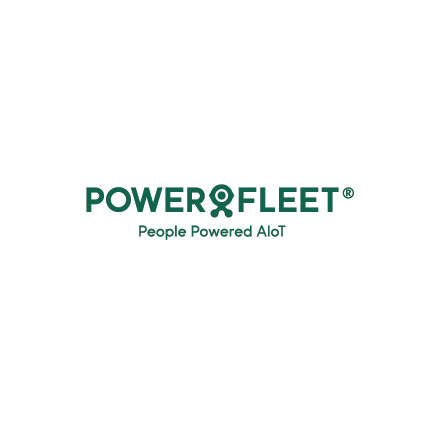Every few days, someone in the United States dies from accidents involving material handling equipment. The National Safety Council reports that forklifts alone caused 73 work-related deaths in 2022 and nearly 25,000 nonfatal injuries during 2021-2022. These sobering statistics underscore an urgent safety crisis in warehouse environments where heavy machinery and human workers operate in close proximity.
Modern warehouses face unprecedented pressure to deliver faster and operate more efficiently, often at the expense of safety protocols. Innovative technology offers a path forward that doesn’t sacrifice worker protection for productivity.
Critical Warehouse Safety Challenges
Warehouses drive global supply chains but pose significant risks. Workers operate in environments filled with fast-moving forklifts, heavy machinery, and tight deadlines. Without proper safety systems, businesses find it difficult to maintain efficiency while safeguarding their people and assets.
Intensifying Operational Demands
Expanding warehouses are encountering increasing bottlenecks and inefficiencies. Rising order volumes and immediate fulfillment expectations are pushing both workers and equipment beyond safe operating limits, increasing the risks of accidents.
Labor Shortages and Expertise Gaps
A diminishing labor pool forces warehouses to operate with fewer skilled workers, leading to longer shifts and an increase in fatigue-related incidents. Less experienced employees tend to make more mistakes, highlighting the need for comprehensive training and ongoing monitoring.
Forklift and Pedestrian Collision Risks
OSHA data shows that 90% of forklifts are involved in some form of warehouse accident throughout their operational lifespan. Limited visibility, confined spaces, and heavy pedestrian traffic create persistent collision hazards. Up to 80% of forklift accidents involve pedestrians. Without advanced detection systems, these incidents often result in serious injuries or deaths.
Complex Regulatory Compliance
Safety regulations constantly evolve, and failing to comply can result in significant penalties, operational interruptions, and increased liability exposure. Businesses need solutions that effectively enforce and document adherence to safety standards.
Fragmented Monitoring Systems
Many facilities still depend on manual processes or disconnected safety tools, hindering real-time operational visibility. When incidents happen, delayed reporting and lack of video evidence complicate investigations and hinder proactive risk management.
The False Economy of Delayed Safety Investment
Companies often hesitate to adopt safety technology due to cost concerns or fears of operational disruption. However, the human and financial toll of warehouse accidents far outweigh the investment in preventive measures. The key is to deploy scalable, AI-driven solutions that enhance safety while maintaining productivity.
Powerfleet’s Integrated AIoT Ecosystem: Comprehensive Warehouse Protection
Powerfleet addresses these challenges by embedding Artificial Intelligence of Things (AIoT) technology into warehouse operations, creating a unified safety framework that safeguards workers and optimizes asset management.
Forklift Gateway: The Command Center for Safety Operations
The Forklift Gateway serves as the nerve center for Powerfleet’s safety ecosystem, collecting real-time data and facilitating communication between equipment and management systems. This integration enables:
- Continuous Monitoring: Real-time tracking that identifies unsafe behaviors before accidents happen
- Instant Impact Detection: Immediate alerts when collisions occur, enabling rapid response
- Operator Verification: Ensuring only authorized personnel operate equipment, reducing accidents from inexperience
Pedestrian Proximity Detection: Anticipating and Preventing Collisions
Using AI and vision-based systems, the Pedestrian Proximity Detection solution identifies high-risk objects – particularly people and vehicles – in a forklift’s path. Key capabilities include:
- Preemptive Collision Warnings: Real-time alerts that warn drivers of potential hazards
- Enhanced Worker Protection: Reducing pedestrian injuries through early detection
- Data-Driven Risk Assessment: Identifying facility danger zones and high-risk driving behaviors
Importantly, this system requires no wearable devices or additional infrastructure, simplifying implementation.
Digital Video Recorder (DVR): Capturing Essential Safety Evidence
Powerfleet’s DVR provides a continuous mobile recording system that documents activity in front of and behind forklifts, offering:
- Streamlined Incident Investigation: Clear visual documentation that reveals accident causes
- Objective Condition Documentation: Irrefutable evidence for compliance verification and training
- Remote Accessibility: Wireless or cellular connectivity allowing for cloud-based event review and live streaming
Vision AI: Proactive Risk Detection Through Intelligent Monitoring
While our core AIoT solutions create safer warehouse environments, Vision AI adds another protection layer through continuous operator behavior analysis and operational risk assessment.
Intervening Before Behavior Becomes Dangerous
Powerfleet’s Vision AI employs advanced driver monitoring systems (DMS) and road-facing cameras (ADAS) to identify and address unsafe actions in real-time. In warehouse settings, Vision AI offers:
- Fatigue and Distraction Detection: Cameras can identify warning signs such as closed eyes, yawning, or phone usage, minimizing human error
- Protocol Adherence Monitoring: Ensures that operators wear seat belts and adhere to operational best practices
- Critical Event Documentation: Records harsh braking, rapid acceleration, and impacts for analysis
- Instantaneous Operator Alerts: Provides immediate audio and visual warnings to prevent accidents before they occur.
Extending Warehouse Safety to the Open Road
While Vision AI excels in warehouse environments, its true strength lies in creating a seamless safety continuum between warehouse operations and on-road transportation. According to the National Highway Traffic Safety Administration (NHTSA), nearly 41,000 people died in U.S. traffic crashes in 2023, with human error as the primary factor in most collisions.
Powerfleet’s Vision AI addresses these challenges by applying the same sophisticated monitoring capabilities to vehicles once they leave your facility:
- Driver Fatigue Detection: Continuously monitors eye closure, head position, and yawning patterns to identify drowsiness, which studies show makes crashes three times more likely to result in severe injury or death
- Distraction Prevention: Analyzes head movements, gaze direction, and device interactions to combat distracted driving
- Collision Avoidance: Monitors vehicle speed, road conditions, and surrounding environments to issue predictive alerts before accidents occur
By capturing comprehensive data on unsafe behaviors across your entire operation, Vision AI enables managers to improve training programs, strengthen safety policies, and reduce liability exposure. This cultivates a proactive safety culture where both facility workers and drivers are more aware of potential hazards, ensuring thorough protection from warehouse to customer.
Unifying Safety Across Operations with the Unity Platform
However, our SaaS-based, device-agnostic Unity platform serves as the cornerstone of Powerfleet’s comprehensive safety strategy, bridging the traditional gap between in-warehouse and on-road safety management. Unlike fragmented solutions that address these environments independently, Unity provides a unified, integrated dashboard for overseeing safety across your entire operation from a single pane of glass.
This unified approach follows a consistent methodology across all environments:
- Capture Events: Multi-angle camera coverage documents critical safety incidents in warehouses and on highways
- Prevent Accidents: Real-time alerts and coaching stop incidents before they happen
- Analyze Data: Comprehensive safety scoring identifies trends across your entire operation
- Improve Safety: Data-driven improvements create a sustainable safety culture from the first mile to the last
By removing operational blind spots between warehouse floors and delivery routes, Unity maintains consistent safety standards throughout your supply chain while simplifying management through a single interface.
The Bottom Line: AIoT’s Impact on Warehouse Safety and Costs
Implementing AIoT solutions results in measurable improvements in reducing warehouse accidents and achieving cost savings. According to the National Safety Council, work injuries – including lost productivity, medical expenses, and administrative costs – totaled $167 billion in 2022. By proactively addressing safety challenges, warehouses can significantly cut these expenses while fostering safer working environments.
Powerfleet’s comprehensive AIoT ecosystem transforms warehouse safety by equipping you with the tools necessary to prevent accidents before they happen. Through intelligent monitoring, early warning systems, and centralized management, these solutions safeguard your most valuable assets – your people – while optimizing operational efficiency.
Take the next step in creating a safer, more productive warehouse environment. Contact us today to discover more about our in-warehouse safety solutions.


